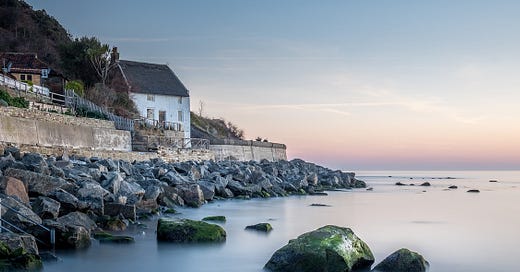Stop the Destruction of Marine Life in the North Sea
Creating a Sustainable Future for Nature and Coastal Communities
This article has two simple messages. In truth they are in the title and the subtitle.
1. It is time for the destruction of marine life in the North Sea to stop.
2. A more sustainable future for nature and coastal communities is available if we make the positive choice to adopt it.
At the UN Oceans Conference in Paris the UK Secretary of State for Environment, Food and Rural Affairs, Steve Reed announced government’s plans to ban bottom trawling across 41 protected areas of English seas spanning 30,000 square kilometres. This is to be welcomed but needs to be introduced without delay.
The North Sea, a vital marine ecosystem bordered by Denmark, Germany, the Netherlands, and the United Kingdom, has long been a cornerstone of economic and ecological vitality for coastal communities.
The communities I’m most familiar with are along the Yorkshire Coast, close to where I live, Redcar, Saltburn, Staithes, Skinningrove, Runswick Bay, Sandsend, Whitby, Robin Hoods Bay, Scarbrough and the rest. I’ve spent some time though visiting the Friesian Islands, Bremerhaven, communities in Jutland. They all rely on the North Sea as ports, as tourism-based communities, as fishing villages.
The sad truth is that it is being degraded, and marine life destroyed. After decades of intensive commercial fishing, particularly bottom trawling, fish stocks have been decimated and marine habitats destroyed.
Historical Abundance of Fish Stocks in the North Sea
Before the advent of industrial fishing in the 19th and 20th centuries, the North Sea was renowned for its rich biodiversity and abundant fish populations. Species such as cod (Gadus morhua), haddock (Melanogrammus aeglefinus), herring (Clupea harengus), and plaice (Pleuronectes platessa) thrived in vast numbers, supporting both marine ecosystems and human livelihoods.
Historical records indicate that in the pre-industrial era, cod catches alone could exceed hundreds of thousands of tonnes annually without depleting stocks, as fishing was largely conducted using low-impact methods like handlines and small nets (Engelhard, 2008). The North Sea’s complex food webs, including abundant prey species like sandeels and zooplankton, sustained large populations of fish, seabirds, and marine mammals.
By the mid-20th century, however, mechanized fishing vessels and advanced gear transformed the industry. Annual catches surged, with cod landings peaking at over 300,000 tonnes in the 1970s (ICES, 2020). This overexploitation led to dramatic declines; by the early 2000s, cod stocks were estimated at less than 10% of their historical biomass (Myers et al., 1997). Other species, including herring and plaice, faced similar declines, disrupting ecosystems and threatening the livelihoods of fishing communities.
Keep reading with a 7-day free trial
Subscribe to Creating Communities to keep reading this post and get 7 days of free access to the full post archives.




